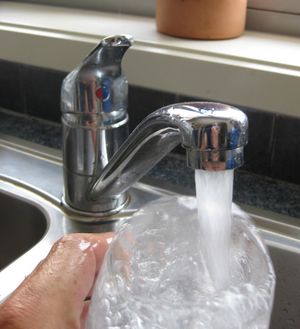IEHIAS question: example from water: Difference between revisions
(Created page with "Category:IEHIAS Category:IEHIAS assessment methods :''The text on this page is taken from an equivalent page of the IEHIAS-project. ''As part of the E...") |
No edit summary |
||
| Line 19: | Line 19: | ||
*What effects will climate change have on organic carbon, and how will this impact drinking water quality in specific parts of the EU? | *What effects will climate change have on organic carbon, and how will this impact drinking water quality in specific parts of the EU? | ||
*What assumptions are required to carry out such an assessment, and how do these assumptions affect our estimates of impacts? | *What assumptions are required to carry out such an assessment, and how do these assumptions affect our estimates of impacts? | ||
==See also== | |||
{{IEHIAS}} | |||
Latest revision as of 19:21, 25 September 2014
- The text on this page is taken from an equivalent page of the IEHIAS-project.
As part of the EU-funded INTARESE proejct, which contributed to the development of this Toolbox, a case study was carried out to assess the health impacts associated with the supply and use of domestic water.

Huge strides have been taken over the last century, across Europe, in improving the treatment and quality of domestic water supplies. As a result, problems of sanitation and risks of exposure to microbiological contaminants have declined greatly. Nevertheless, potential for contamination still occurs, not only by 363microbial agents – usually as a result of short-term failures in treatment or problems in the distribution system – but also by chemicals. In the 1970s, for example, there was widespread concern about pollution both by nitrates and pesticide residues, largely from agricultural sources. More recently, fears have been expressed about contamination by potential endocrine disrupters, including heavy metals (e.g. mercury) and PAHs. In addition, disinfection by-products caused by the water treatment (e.g. trihalomethanes) have been a cause for concern.
Against this background, a range of policies have been introduced by the European Union, aimed at protecting both surface fresh waters and groundwater resources. In 1998, many of these measures were brought together, under the Drinking Water Directive, which lays out limit values for many substances in waters intended for human consumption. Considerable restructuring has also occurred within the water industry, with privatization of water utilities in many countries. Currently, new policy initiatives are being developed, aimed at more integrated catchment management, under the Water Framework Directive, while concerns about the long-term security of water supplies are being raised in the face of growing demands on water resources, and the long-term effects of climate change. For all these reasons, the need for integrated approaches to assessment of water resources, and their health implications, is a recognised priority.
This case study was designed to address these issues. It was carried out in two parts. The first set of questions were:
- Which chemical contaminants with a known impact on public health are present in drinking water, and in which quantities?
- What are the magnitudes of the health impacts of these exposures on European populations?
- How certain can we be about our estimates of health impact, and where do the uncertainties come from?
The second set of questions were defined after the results of a preliminary, broad assessment had been carried out:
- What effects will climate change have on organic carbon, and how will this impact drinking water quality in specific parts of the EU?
- What assumptions are required to carry out such an assessment, and how do these assumptions affect our estimates of impacts?